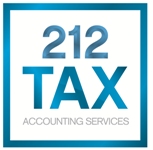This Financial Guide gives you a framework for deciding whether leasing a car makes sense for you. It explains the meaning of various lease provisions, as well as the initial, ongoing and final costs of leasing. Finally, it gives you the information you need to negotiate the best possible lease.
Will you save money leasing a car instead of buying one? It depends on (1) what kind of deal you strike with the dealer, (2) how many miles you drive a year, (3) how much wear and tear you put on a car, and (4) what you will use the car for (i.e. personal or business use).
In order to decide whether to lease or buy, you need to consider all of the factors involved in both leasing and buying such as:
- Initial expenses
- Ongoing costs
- Final costs
- Option rights
- Whether you are able to deduct any or all of the costs of the car for business use
- Whether having an ownership interest in the car is of overriding importance to you
This Guide also contains a list of questions to use when negotiating with the dealer to ensure that you don’t neglect to ask about any charges or lease terms that might enter into your analysis.
How Leasing Works
There are two types of lease arrangements: closed-end (“walk-away”) and open-end (finance). Here’s how they work:
Closed-End Leases: The Dealer Bears the Risk Of Depreciated Value
When a closed-end lease is up, you bring the car back to the dealership and “walk away.” the car must be returned with only normal wear and tear, and at or less than the mileage limit stated in your lease. Since the dealer, and not you, is bearing the risk that the value of the car at the end of the lease will go down, your monthly payment is generally higher than with an open-end lease.
Open-End Leases: You Bear the Risk of Depreciated Value
With an open-end lease, you bear the risk that the car will have a certain value, called the estimated residual value, at the end of the lease. In this case, the monthly payment is lower.
When you return the car at the end of the lease, the dealer will have the car appraised. If the car’s appraised value is equal to the estimated residual value in the agreement, you won’t need to pay anything at the end of the lease term. Under some contracts, you can even receive a refund if the appraised value is greater than the residual. If the appraised value is less than the residual value, however, you may have to pay all or part of the difference.
Tip: If you disagree with the value arrived at by the appraiser, you may choose to have an independent appraisal made at your own expense, and then try to negotiate an agreement with the dealer as to the residual value. Try calling other dealerships to find an independent appraiser or a vehicle appraisal service.
Determining Your Costs
Your total cost of your lease includes:
- Initial expenses
- Continuing costs
- Final costs
- Option costs (if any)
The amount of money that a dealer can collect at the end of the lease period is regulated under the federal Consumer Leasing Act (CLA). The CLA states dealers cannot collect more than three times the average monthly payment, except as follows:
- The vehicle has unreasonable wear and tear or the mileage is greater than that specified in the lease
- You agreed to pay an amount greater than specified in the original contract
- The lessor wins a lawsuit in which they asked for a greater amount
The dealer also has the option of selling the car at the end of the lease term. If the car is sold for less than the residual value stated in your leasing contract, you could be obligated to pay as much as three monthly payments to make up the difference.
Tip: Although dealers will generally not risk the goodwill of their customers and sell leased cars for less than the residual value just to move the car quickly, during the negotiations phase you may want to include the right to approve the final sales price of the leased vehicle as part of your lease agreement.
Your Initial Lease Expenses
The first step in deciding whether to lease or buy is to find out what your initial (upfront) expenses are. This figure is part of the total dollar amount that you will use to compare with the cost of buying with leasing a vehicle.
Initial costs are the down payment you must come up with when you lease a car and include the security deposit, first and last lease payments, capitalized cost reductions, sales taxes, title fees, license fees, and insurance. With a lease, the initial costs usually total less than the down payment typically needed to buy a car. Further, all initial costs are subject to negotiation during the bargaining period with the dealer.
As mentioned previously, the federal CLA requires the lessor to disclose all up-front, ongoing, and final costs in a standard, easy-to-read format.
Security deposit. The lessor is allowed to keep the security deposit if you owe money at the end of your lease or if you missed a monthly payment. The security deposit can also be used by the dealer to cover any damage to the car or mileage that is in excess of the limit specified in the lease. If you do not owe any money on the lease at the end of the term, your security deposit is returned to you.
First and last lease payments. The first and last months’ payments are usually required to be put down at the beginning of the lease agreement. Under some agreements, the last payment might be waived if you have a good credit rating–so be sure to ask about this.
Capitalized cost reduction. This is similar to a down payment. The dealer may ask you to put a certain amount of money down before leasing. The amount of the capitalized cost reduction varies with the business custom prevalent in that specific geographic area and the credit rating of the customer. The larger the down payment, the smaller the monthly payment under the lease typically is. However, most people who want to lease instead of buy don’t want to put down a large down payment, and the lack of a down payment is one of the major advantages of leasing.
Tip: Trading in your old car can reduce your down payment and/or your monthly payments.
Sales tax, title fees, and license fees. The CLA requires the dealer to disclose sales tax, title and license fees in writing. It also requires the dealer to tell you what type of insurance coverage is required. In addition, some states apply a “use” tax, which is similar to a sales tax, but is added to each monthly payment.
Ongoing Lease Costs
Next, you must determine what the ongoing costs of leasing are. Typically, these include monthly payments, and repairs and maintenance.
Similar to a loan, the monthly lease payment is dependent on the term of the lease, the initial “purchase price” of the vehicle and the implicit interest rate. Unlike a loan, another important factor is the “lease-end” or “residual” value. This is the expected value at the end of the lease term.
In a lease situation you are, in effect, paying for the difference between the initial purchase price and the residual value. You should negotiate the best possible (lowest) purchase price. This will lower your cost of leasing the vehicle. If this is a closed-end lease and you do not intend to purchase the car at the end of the lease term, you should also try to negotiate a higher residual value
Example: If you walk into a dealership and ask to lease a car, they will often try to base the lease on the Manufacturer’s Suggested Retail Price (MSRP). You would never pay this sticker price to purchase a car for cash, and you should not do so in a lease situation. First, negotiate the lowest possible price on the vehicle, and then negotiate the lease terms.
For example, assume a car has an MSRP of $36,955 (and the lease provides for a term of 36 months, an implicit interest rate of 6.67 percent and a residual value of $25,895). Based on this MSRP, the monthly lease payment would be $481.50, excluding sales/use tax, licenses, etc. The invoice (dealer) cost on the same vehicle is $32,469 (see Info Sources at the end of this Guide to find out how to get this information.) If you negotiated a price between MSRP and invoice, say $34,750, the lease payment would be reduced to $416.00.
Tip: In some cases professional guidance might be helpful in comparing the continuing costs of buying.
Planning Aid: For additional information on buying and leasing a car, including insider tips and new car information, please see The National Vehicle Leasing Association and Edmunds.
Note: Purchasing the same car at the negotiated price under the same terms with no down payment would result in significantly higher monthly payments of $1067.74.
The CLA requires dealers to disclose the total number of payments, the amount of each payment, the total amount of all payments, and the due date or schedule of payments. There is usually a penalty for late payment, which the lessor must disclose to you as well.
Tip: The expenses of operating your vehicle should also be taken into account. As part of your negotiations, try to make the repair and maintenance one of the terms of your lease.
-
- In a “maintenance lease”, the dealer assumes the maintenance expenses. Conversely, in a “non-maintenance lease,” the customer assumes these expenses. If the dealer is to provide repair and maintenance, you will have to bring the car to the dealership in accordance with the manufacturer’s suggested schedule in order to keep the warranty coverage.Note: Even if you have to pay for repair and scheduled maintenance, you usually have to observe the manufacturer’s scheduled maintenance in order not to jeopardize warranty coverage.
- The lease may contain a “budget maintenance” provision, authorizing the dealer to collect a set amount from you each month for maintenance. If maintenance expenses are incurred, the dealer deducts them from your maintenance account. At the end of the lease, you’ll either have to make up the difference or, you’ll get a refund if you’ve deposited more than was used. If you would like extended warranty coverage, some dealers offer it at extra cost.
Tip: Lease agreements often require that a minimum level of insurance be maintained on the vehicle. You should consider whether your continuing insurance costs are higher on a lease than on an outright purchase. Also, watch out for lease provisions where the lessor will purchase the insurance and bill you for the amount. This can be more costly than if you arrange the insurance yourself.
Your Final Costs
- Excess mileage charges
- Default charges
- Excessive wear and tear charges
- Disposition charges
Excess mileage charges. Mileage limitations usually occur with a closed-end lease. If you have gone over the allowable mileage at the end of your lease, you will have to pay a fee. With an open-end lease, although there is no penalty, if you exceed the mileage limit the appraised value at the end of the lease term will usually be lower.
Tip: Consider carefully whether the mileage allowance is enough. Make some calculations of the miles you have driven per week, month, and year to find out whether the mileage allowance is sufficient. Be aware that the low-mileage lease deals currently popular in certain areas offer mileage limits that are insufficient for many people. If you think you need more than the allowable mileage, negotiate a larger mileage allowance in your lease.
Tip: If you stay under the mileage limit, you don’t get a refund.
Default charges. These cover any payments or security deposits that the dealer does not receive from you and legal fees and costs the dealer incurs to repossess the car.
Excessive wear and tear charges. You’ll have to pay charges for excessive wear and tear when you return the car at the end of the lease unless the contract reads otherwise. The dealer must tell you in writing the specific definition of excessive wear and tear. Generally, it means anything beyond normal mechanical or physical usage.
Disposition charges. These are the costs of cleaning the car, giving it a tune-up, and doing final maintenance. If the agreement does not state otherwise, the dealer may pass these costs on to you.
Option Rights
Your option rights include the right to (1) purchase, (2) extend or renew, and (3) early termination.
Purchase Option. Your lease may include the option to purchase the car at the end of the lease term. This option is usually found in open-end rather than closed-end leases. Under the CLA, the dealer must tell you the estimated residual value of the car and the formula that will be used to determine your purchase price at the end of the lease.
Tip: If you think you might want to buy the car, be sure the purchase option is in your lease before you sign it; otherwise you’ll have to renegotiate later, at which time you may have less bargaining power.
Renewal Option. You should negotiate the right to extend or renew as part of your lease. Sometimes the lessor will reduce your cost if he knows you might want an extension of the contract.
Early Termination Option. If you terminate your lease after, say, 36 months on a 48-month lease, you will have to pay an extra charge, based on the difference between the residual value of the car at that time and the estimated residual value at the end of the lease term (stated in the contract). The difference between these two may be great. In most lease agreements, you must keep the car at least 12 months.
The CLA requires that the dealer tell you before you sign the contract whether you can terminate early, and the cost of early termination.
Tip: Look for a premature termination clause, which provides for termination prior to the end of the lease term.
Questions To Ask Before You Sign
Here is a list of questions you may want to ask the dealer before you enter into a car lease:
- What kinds of leases are available and what are the differences? The two main types of leases have already been explained here, but dealers may have variations.)
- What will my initial costs of leasing be?
- What will my continuing costs of leasing be?
- Will a trade-in decrease my initial cost or continuing costs?
- What happens if I exceed the mileage limit specified in my lease?
- How will my mileage allowance be enforced if I take an early termination or a purchase option?
- Can I sublease if I fall behind in my payments or want to stop leasing?
- What happens if I want to terminate my lease before the agreement is up?
- What are my options at the end of my lease?
- What costs and charges can I expect to pay at the end of the lease?
Other Factors to Consider
There are a number of other factors that come into play in the lease-vs.-buy analysis:
- When you buy a car, every monthly payment increases your equity. You’ll end up with a car (of depreciated value) you can either sell or keep. In leasing you get no equity; the monthly payment is more like paying rent. You don’t own the car at the end of the lease though you may have the option to buy if that is included in your lease agreement.
Tip: With leasing, you can invest the money you would have used for the down payment. If you use the car for business, whether you lease or buy, you can deduct some or all of the cost of the car subject to current IRS rules.
- Because they aren’t considered “debt”, leasing contracts typically aren’t listed on a loan application; leaving your credit free for other loans.
- Leasing a car is convenient and frees up cash you wouldn’t have available if you bought a car since the initial costs can be lower.
External Sites
- Car
Purchasing Information provided by AutoByTel.com. - Edmunds
provides comprehensive information on entire leasing process. - Independent
Car Ratings, detailed buying advice, and a comparison of buying
vs. leasing is offered by Consumer Reports Online. - Kelley
Blue Book provides a variety of information about automobiles.
- MSN Autos offers prices and previews, new car reviews, Kelly blue book values, and virtual auto shows.
Government and Non-Profit Agencies
- Better Business Bureau
- The National Vehicle Leasing Association
7250 Parkway Drive Suite 510
Hanover MD 21076
Tel. (800) 225-NVLA - The Federal Trade Commission
Request a Consultation
We are able to work with your unique schedule including after-hour appointments, most weeknights, and weekends.
Call to action
Build Growth Opportunities with Extensive Business Financial Services
We serve clients in a range of industries, including hospitality, nightlife, real estate, legal, and medical.


